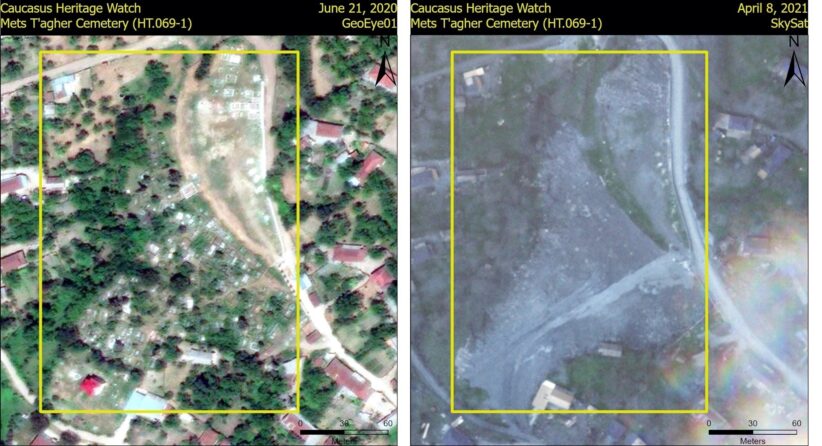The past week social media was full of reaction to President Biden’s groundbreaking recognition of the Armenian Genocide. Numerous high-profile figures applauded the President’s decision, from scholars to journalists to members of Congress, as well as new member of his administration Samantha Power, who was confirmed to head USAID just days later, and even former staunch opponents of US recognition like retired State Department official Dan Fried. You can check many of them out at the link above, and here’s one more for the road — entertainment legend Cher.
WHAT WE’RE STREAMING: This very deep and moving interview by host Christopher Lydon of WBUR Boston with documentarian Nubar Alexanian, photographer Scout Tufenkjian, and professor of Armenian art Christina Maranci. It explores not just the legacy of the genocide in the diaspora but Armenian culture as a whole through the lens of artistic media. Get lost in the global Armenian world in this enveloping episode.
While the vast majority of articles on Biden’s recognition were laudatory, this particularly strange one has caused a firestorm on Twitter. Benny Morris and Dror Ze’evi wrote an op-ed in the liberal-leaning Israeli newspaper Haaretz that, despite their book “The Thirty-Year Genocide” about Turkey’s destruction of its Armenian and other Christian populations between 1894-1924, in actuality it was not a genocide. The reason for this bemusing claim which counteracts the very thesis of their nearly 700 page book published, of all days, on April 24, 2019, is as follows.
After initially defending the article, about 12 hours later Ze’evi apologized for what he calls a mix-up in translation that made it appear he was claiming the Armenian experience was not genocide. Haaretz has not issued a correction but has changed the title to “Not an Armenian Genocide, but a Genocide of Christians”.
Whatever the intention of this article, it raises questions of what is to come. With Biden and the vast work of the academic community closing the door on doubt that a genocide occurred, it appears we are entering a new stage of denialism. New ways are being devised to use the term while undermining its meaning or technicalities which don’t deny history but still find a way to make it not a genocide. Dr. Vicken Cheterian has been engaging in pushing back on this through discourse on Twitter:
Attention sports fans. While Armenians are jazzed up about the success of their national football teams, there’s unfortunately little to cheer about regarding the state of who the likes of UEFA and FIFA do business with. Despite an onslaught of protest about plans to hold the postponed FIFA 2020 World Cup qualifiers in Baku due to the war, corruption, and numerous human rights violations, the decision to host matches there has been confirmed. The State Oil Company of the Azerbaijani Republic (SOCAR) is a sponsor of UEFA, as are a number of global think tanks.
Caucasus Heritage Watch, a team of researchers at Cornell & Purdue universities, which we brought to your attention in a previous edition, has been keeping an eye on Armenian cultural heritage in the areas captured by Azerbaijan in the recent war. With many already shaken by the removal of Ghazanchetsots Cathedral’s steeple, unfortunately, CHW has made their own startling discovery, one of no doubt many to come. If you follow just one account on Twitter, make it this one.
While in December 2020 the outspoken Vice-Rector of Azerbaijan Diplomatic Academy spoke with bemusement that Armenia would think the Turkic world wants to conquer or destroy it:
His April 30 tweet, which appears to be innocently posing a simple question, was immediately dragged on social media for the obvious contradictory message beneath it:
He was scolded for the tweet by Caucasus analyst and author Laurence Broers:
For his part, Ismailzade pretended he had no idea why anyone was mad:
When so much seems grim, it is important to channel that frustration into constructive action. Armenia has the makings of a player in the world tech sphere, however it doesn’t graduate enough computer scientists to sustain the big players it will need to attract. This report by entrepreneur Stefan Papp lays out some ideas for how Armenia can address that and grow further:
IT in Armenia – From Piece to Player
A gem of Yerevan often unseen by visitors is its metro system. Built during the 1970s, the system has cavernous stations with unique adornments (however as photography is forbidden there isn’t much evidence online!) Come along on the first part of a journey through the stations while basking in the vibe of an average day in Yerevan.
















